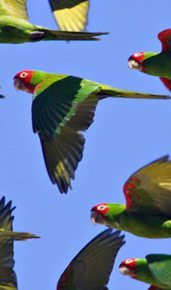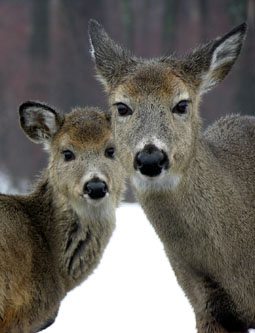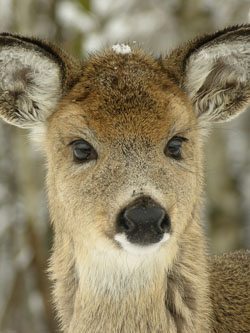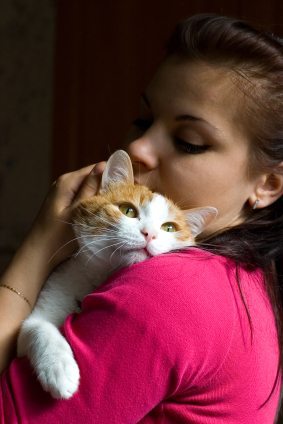 Years ago I worked with a feral cat named Smokey at the local animal shelter. Smokey hadn’t done well in the shelter and had tried to escape several times. Soon after he arrived he became very sick and would have died if one of the staff had not force-fed him and nursed him back to life. As he grew stronger, however, he continued to be very wary of people, often biting volunteers who tried to interact with him. When I met him they were very concerned because after three months in the shelter he sat hunched in one corner, never moving from that spot, severely depressed. He started at every noise and movement, and, although he could be taken out of his cage by a few of the most experienced volunteers, he would try to bite people¹s faces as soon as he saw them.
Years ago I worked with a feral cat named Smokey at the local animal shelter. Smokey hadn’t done well in the shelter and had tried to escape several times. Soon after he arrived he became very sick and would have died if one of the staff had not force-fed him and nursed him back to life. As he grew stronger, however, he continued to be very wary of people, often biting volunteers who tried to interact with him. When I met him they were very concerned because after three months in the shelter he sat hunched in one corner, never moving from that spot, severely depressed. He started at every noise and movement, and, although he could be taken out of his cage by a few of the most experienced volunteers, he would try to bite people¹s faces as soon as he saw them.
Smokey and I formed a strong bond during the month I worked with him at the shelter; his depression cleared and he became much more relaxed and confident with his favorite people. I could feel that it was my love and high regard for him, in addition to Reiki, which brought him back to life and renewed hope. At the time I was still reconnecting with the animal communication abilities I’d had as a child, and Smokey was an expert communicator. With him I received elaborate information effortlessly. I had come to love him very much and knew that we were already a team, and, after much careful consideration, I brought him home to live with me.
From the beginning Smokey was deeply attached to me, but he remained wary of my husband and daughter, our dog, and the two cats. In many ways Smokey was basically still feral and distrustful of people. His failing eyesight aggravated his sense of vulnerability, and he was careful in his interactions with everyone. I offered Reiki to him frequently, and he would come up and lean against me and doze for as long as I could continue the treatment. His tolerance for physical contact improved, and I could touch him carefully as long as he could see my hand approaching. He often slept with me but would sometimes jump down when I turned in the night. When I was sick, however, he stayed with me constantly.
But on the inner level Smokey and I were a wonderful team without any reservations. Smokey was a master communicator, not only with me but with other beings as well, and he was very focused in his desire to help me in any way he could. Almost as soon as he arrived home with me he took on as his purpose in life helping me to develop my animal communication skills. In my early work he acted as a facilitator in my communications with animals, and, with his assistance, their messages invariably came in loud and clear. And on a practical level his skill in communicating with other beings was highly appreciated in our household.
During the summer he came to live with us we had several major ant incursions in our home. I noticed the first of these incursions only moments before I had to leave the house for a long appointment. With considerable agitation I told the ants that it was not all right to come indoors in such large numbers and I wanted them to leave by sunset. I told them I did not want to hurt them but they could not stay here, and, if they did not leave, I would feel I had no choice. Smokey watched me with concern, and, as I left, I noticed his eyes were tightly closed and he had gathered himself into the loaf shape he often assumed when he was concentrating hard on helping me with some inner task.
When I returned several hours later, there were only a handful of ants. By suppertime all the ants were gone, and Smokey was looking very pleased with himself. I had had very good results communicating with ants when they came indoors, but I had never seen such a rapid withdrawal. Usually it took a couple days for all of the ants to move out. Smokey had clearly devoted himself to helping me with this task for a considerable part of his day with his usual masterful results.






 1) Your animal is intelligent and has emotions much like you do.
1) Your animal is intelligent and has emotions much like you do.